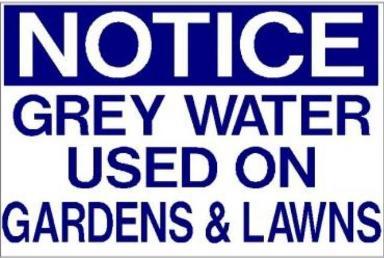Interview with Laura Allen from
greywateraction.org
You started this vision trek back in 1999 with a back yard grey water system. How has the technology changed since then?
When I first started doing greywater systems it was about empowerment and shifting how I'd been accustomed to interacting with water in my house to take control and turn this "wastewater" into a resource. It was a time of experimentation, personally figuring out how greywater works and what I could do with it.
After living with greywater systems for many years, I began to see what aspects of the systems took a lot of maintenance, what parts of the design caused system failures, and what parts worked well. Over time I built more and simpler systems, relying more on nature to do the work, and less on human involvement. I found that the simplest systems, designed to not need filtration or pumps, worked very well and were long lasting. I also began focusing on what I could grow with greywater, looked at the best food producing plants that thrived on greywater.
For the high tech systems, there have been advancements on the more mechanized systems that filter and pump greywater. What some people want, and some companies claim to deliver is a "plug and play" system, one that will work for anyone, anywhere, and is easy to install. Almost all the companies selling "greywater systems" are only a few years old, so it will take more time to see if their systems work over the long term. I also think it's important to consider the embodied energy and electricity used in more complex systems and question the overall benefit and environmental impact they have.
How is the definition and public perception concerning grey water changing?
From my perspective there is more interest in greywater now than ten years ago. People recognize their used shower water can be beneficial to their landscapes, and the awareness is growing that we can't continue wasting and polluting water the way we've done in the past. Our relationship to water must change, and greywater is a piece of that transformation.
What are the current institutional barriers to sustainable water use?
Many sustainable water use practices are not allowed under current codes. This is changing, but slowly. Arizona is a good state to look at for forward thinking policies. They made simple greywater systems legal in 2001, and places like Tucson will be requiring greywater and rainwater harvesting for future construction. It's important to be active on multiple levels, first modeling safe and sustainable practices in our homes, sharing what works with our local agencies, and advocating for local and state policy changes. California has recently changed its greywater code to make it friendlier to residential greywater reuse and made simple systems legal, some without requiring any permits at all.
What can the typical Bay Area single family residence do to re-use their grey water?
Conservation is always the most ecological place to start when seeking to reuse water. After that, greywater from the washing machine is usually the easiest place to access greywater, a system can be built without altering the drainage plumbing. It can be used to irrigate trees, bushes, vines, and other large perennial plants. Showers are another great source, though accessing the plumbing can be more complex.
What are the best places to get a workshop?
greywateraction.org offers a one day, hands-on workshops, about once a month. They are posted on greywateraction.org.
We have just begun offering a five day training program for people who want to install greywater systems as part of their business.
Greywater Action History -
In 1999, Laura Allen and Cleo Woelfle-Erskine built a greywater system in their backyard out of concern about their household water use. Their backgrounds in environmental science and permaculture design sparked their interest in water reuse and wastewater treatment using constructed wetlands. They built several prototypes, then self-published a 'zine called
The Guerrillas Greywater Girls Guide to Water that combined strategies for conserving and reusing household water with stories of their explorations of California's water infrastructure. Over the next few years, they taught hands-on workshops in community venues, continued researching and fine-tuning small-scale urban greywater systems, and edited an anthology on strategies for water sustainability from small-scale eco-technologies to global grassroots political movements.
The anthology
Dam Nation: Dispatches from the Water Underground (Soft Skull, 2007) brings together an analysis of water's history with the active fight for its future.
Since 2007 the group has brought these ideas and workshops to a wider audience through conferences, collaborations, and media coverage. Christina Bertea and Andrea Lara, both plumbers by trade, joined to lead hands-on workshops. The group expanded and refined the range of workshops offered, and created educational displays for public events.
In 2009 Greywater Action joined with a water organization called,
greywateraction.org
Laura at greywateraction dot org

